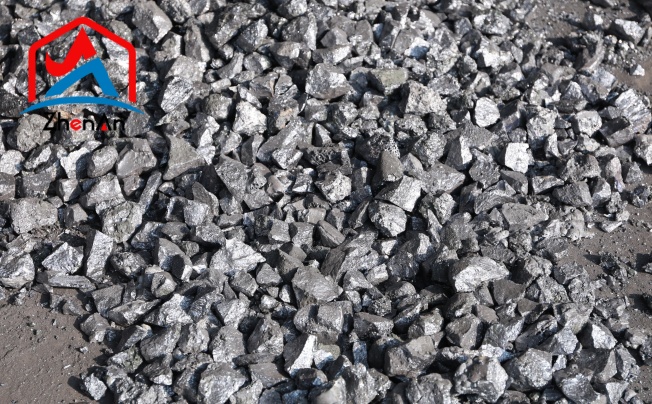Ferrosilicon, a compound composed primarily of iron and silicon, is a crucial alloy that plays a significant role in various industries worldwide.
Composition and Production of Ferro Silicon
Ferro Silicon is a remarkably versatile alloy that finds widespread application in various industries due to its unique composition. It is primarily composed of two key elements: silicon and iron. Silicon, being the predominant component, typically constitutes around 70-80% of Ferro Silicon's composition, while iron makes up the remaining 20-30%.
This combination imparts the alloy with its distinct characteristics, making it ideal for numerous industrial processes. Silicon, a chemical element with atomic number 14, is renowned for its exceptional thermal and electrical conductivity.
Within Ferro Silicon, silicon facilitates heat transfer and enhances electrical conductivity when used in applications such as manufacturing semiconductors or as an additive in steel production. Additionally, silicon's ability to form stable oxides contributes to the alloy's resistance against corrosion.
Iron, on the other hand, provides Ferro Silicon with crucial ferromagnetic properties and enhances its strength. By incorporating iron into the alloy's composition, it becomes magnetic and can be utilized effectively in magnetic materials like transformer cores or magnetic shielding applications.
Hazards Associated with Ferro Silicon Handling and Storage
1. Inhalation Hazards:
Dust particles generated during the handling and processing of ferrosilicon can pose significant respiratory risks if inhaled. As this alloy is often handled in powdered or granular form, the fine particles can become airborne, making them easily inhalable. Once these particles are inhaled, they have the potential to irritate the respiratory system.
Exposure to silicon dust can lead to various respiratory issues, such as coughing, wheezing, and shortness of breath. The irritant nature of these particles causes inflammation in the airways, which can exacerbate pre-existing respiratory conditions like asthma or bronchitis.
Furthermore, individuals subjected to prolonged exposure to high levels of silicon dust may be at an increased risk of developing a severe lung disease called silicosis. Silicosis is a progressive and incurable condition that occurs due to the accumulation of crystalline silica particles in the lungs.
Over time, these deposited particles cause inflammation and scarring within lung tissues, impairing their ability to function properly. Chronic silicosis sufferers may experience symptoms such as chest tightness, persistent coughing with phlegm production, and even respiratory failure in severe cases.
2. Skin Contact Hazards:
While ferrosilicon itself is not corrosive or highly reactive when it comes into contact with skin, prolonged exposure may still result in irritation. When handling this alloy without appropriate protective measures or excessive direct contact over extended periods, individuals might experience skin redness, itching sensation, or even mild dermatitis symptoms.
However, it's crucial to note that exposure to hot molten ferrosilicon poses a greater risk for skin-related injuries. Contact with molten metal can cause thermal burns due to its high temperature.
Extreme caution should be exercised when working with molten alloys by wearing proper protective clothing and using appropriate equipment designed for handling hot substances. By adhering strictly to safety protocols during handling and storage processes involving ferrosilicon—especially by mitigating inhalation hazards through proper ventilation systems—workers can safeguard their health while carrying out their professional duties effectively.
Safety Measures for Handling Ferro Silicon
- Personal Protective Equipment (PPE)
When it comes to handling ferrosilicon, ensuring the safety of workers is paramount. One of the most crucial steps in this regard is providing them with appropriate personal protective equipment (PPE).
Fine particles and dust generated during the handling process can pose respiratory hazards, making it essential for workers to wear respiratory protection masks. These masks act as a barrier against inhalation of harmful particles, safeguarding their respiratory system.
In addition to respiratory protection, wearing gloves, safety goggles, and protective clothing is equally important to prevent skin contact with ferrosilicon. Gloves made from materials resistant to chemicals and high temperatures should be used to shield hands from possible burns or irritation caused by prolonged exposure.
Safety goggles protect the eyes from potential splashes or airborne particles that may cause harm. Furthermore, donning appropriate protective clothing prevents any direct contact between ferrosilicon and the skin.
- Ventilation
Proper ventilation systems play a crucial role in maintaining a safe working environment when handling or storing ferrosilicon. Ventilation helps in reducing and controlling airborne dust levels that might be present during the handling process.
It ensures that potentially hazardous particles are swiftly removed from the air, minimizing the risk of inhalation for workers. Areas, where ferrosilicon is handled or stored, must have effective exhaust systems that facilitate airflow and remove dust efficiently.
This prevents the accumulation of airborne particles that could lead to breathing difficulties or exacerbate existing respiratory conditions. Well-designed ventilation systems not only protect individuals directly involved in handling ferrosilicon but also contribute to maintaining overall air quality within industrial facilities.
- Storage
The proper storage of ferrosilicon is vital for maintaining its integrity and preventing potential hazards associated with mishandling or accidents. To ensure safe storage practices, several factors should be considered: proper labeling on containers indicating their contents; complying with recommended storage conditions such as temperature control; segregation from incompatible materials; and secure containment measures that prevent spills or leaks. Ferro silicon should be stored in designated areas away from sources of heat, ignition, or open flames due to its flammable properties when exposed to certain conditions.
Storing it separately helps mitigate any potential reactions with other substances present nearby. Moreover, implementing appropriate measures like spill containment systems ensures prompt response and reduces environmental risks if accidental spills occur.






